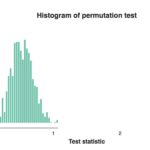Beyond Compare, a powerful file and folder comparison utility, offers varying levels of support for comparing PDF files depending on the version you’re using. Let’s delve into the specifics of how Beyond Compare handles PDF files, along with other popular formats like Word and Excel.
Beyond Compare 3 and Later: Read-Only Comparison
Beyond Compare 3 and subsequent versions provide built-in support for comparing PDF, Word (DOC), and Excel (XLS) files. However, it’s crucial to understand that this comparison is read-only. You won’t be able to directly edit the files within Beyond Compare.
Text Comparison for Word and PDF
When comparing Word documents and PDF files, Beyond Compare converts them into plain text. This process strips away all formatting, embedded images, and other non-textual elements. The comparison focuses solely on the textual content, highlighting differences in wording.
Data Comparison for Excel
Excel spreadsheets are handled differently. Beyond Compare leverages your locally installed copy of Microsoft Excel to convert the file. The comparison then takes place in a Table Compare session, focusing on the data within the current sheet. By default, the first column is treated as the key for identifying corresponding rows, but this can be customized in the session settings. For Excel files with multiple sheets, specific instructions are available in the Beyond Compare documentation.
Exploring Alternatives
Beyond Compare offers alternative methods for handling Word and Excel files, providing more comprehensive comparisons that include formatting and other details. Consult the “Additional File Formats” section within the Beyond Compare knowledge base for more information.
Beyond Compare 2: External Converters Required
Beyond Compare 2 lacks native support for Word, Excel, and PDF files. Attempting to open these file types directly in the File Viewer will result in unreadable content. However, you can configure Beyond Compare 2 to utilize external converters. These converters transform the files into temporary text files for comparison. Keep in mind that this method sacrifices formatting information, headers, and other non-textual elements. Editing the comparison results is not supported.
File Viewer and Data Viewer Options
Beyond Compare 2 offers some workaround solutions using custom rules defined in the “Additional Rules Definitions” page. Additionally, Excel files can be compared using the Data Viewer plug-in after converting them to comma-separated value (.csv) format. This plug-in is available for download from the “Version 2 Plug-ins” section on the Beyond Compare website.
Conclusion
While both Beyond Compare 3 and 2 can compare PDF files, the functionality differs significantly. Version 3 and later offer a streamlined, albeit read-only, comparison of text content. Version 2 requires external converters and provides a more limited comparison experience. Choosing the right version depends on your specific needs and whether a detailed comparison encompassing formatting and other elements is necessary.
